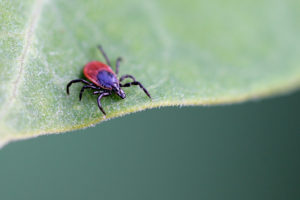Protecting Your Family during Tick Season
Out and About for the Sebago Lakes Region of Maine June 14-21
June 14, 2017Looking for a Road Race? We’ve got one for you!
June 26, 2017Protecting Your Family during Tick Season
twitter.com/StewMillerCLIMB
Tick season is upon us, and this year it has arrived with a bang, thanks to the Powassan virus that has captured the attention of the media and has many New Englander’s tucking their pant legs in a little deeper than usual.
Although the Powassan virus has been around for a long time (the first case was reported in Canada in 1950), it has recently begun to spread across America, and, within the United States, has crept from the northern midwest to the Northeast. But don’t panic yet: studies conducted at the Maine Medical Research Center have shown that only about 7 percent of adult deer ticks carry the virus, and only 75 severe cases across America have been reported to the Center for Disease Control and Prevention in total. However, the fact that a cure has yet to be developed as well as the fact that the virus can be deadly makes it more than worth taking precautionary measures.
Like Lyme disease, the Powassan virus is carried in deer ticks, which thrive in wooded areas. As lakefront homeowners, chances are your property is surrounded by trees and shrubs and may simply be “in the sticks.” Fortunately, there are a variety of landscape management techniques that can mitigate the amount of ticks crawling their way onto your property. Here are a handful of pointers to get you started in making your home a “not so friendly” place for these pesky bloodsuckers.
- Separate your lawn from wooded areas using a 3-foot barrier of stone or wood chips can decrease the amount of ticks finding their way to the areas that you and your family tend to spend time in.
- Clear brush and dead leaves from your property, as such debris can be prime real estate for ticks.
- Get rid of invasive vegetation, particularly Japanese barberry, honeysuckle, and bittersweet, which also draw in the deer ticks.
- If you have a severe tick problem, you can apply acaricides (pesticides specific to ticks) to your property. However, it is important to check your local rules regulations regarding pesticide use and make sure that you are follow them. Also remember that you don’t want those chemicals leaching into the lakewater!
- Finally, go straight the source by deer-proofing your property. Methods can include installing fencing, noise-making apparatuses such as wind chimes, garden or patio lights, motion-activated sprinklers, planting barriers of natural repellents (such as strongly-scented herbs like garlic, chives, mint, and lavender to mask the scent of the annual plants that deer enjoy feeding on, or prickly or thorny bushes that they won’t want to eat or plough through), or investing in deer deterrents (supposedly egg-based products are the most effective).
While the goal of these strategies is to decrease the amount of ticks that crawl into your yard and invade your personal space, they are by no means a guaranteed guard against them. Always make sure to thoroughly scan yourself, your children, and your pets after spending time in the great outdoors.

